Top 5 concept cars from Detroit
The NAIAS dares to dream
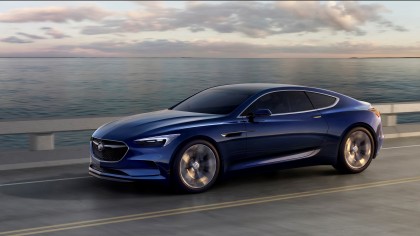
The hopes and dreams of the auto industry
Auto shows are all about new cars, and plenty of new production models were announced at the North American International Auto Show (NAIAS) in Detroit this week. But the real fun part is the concept cars that show the styling or technology direction auto makers are heading toward in the near future.
Acura, Buick, Kia, Nissan and Volkswagen (VW) showed off stunning concept cars that show what they had in mind for the next generation of vehicles. Some are sleek sports cars that try to revitalize the brand, while others have production vehicle potential.
Regardless, they're fun to look at.
As the 2016 NAIAS comes to an end, here are the top five concept cars that debuted at the show.
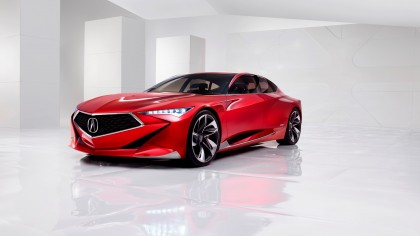
Acura Precision
Acura hasn't found its place in the premium car segment. The cars don't have the same brand cachet as Lexus or the prestigious German brands. It also doesn't help that Acura's share the same running gear and front wheel drive-based platforms as the mainstream Honda cars.
The Precision concept hopes to change that by showcasing the new styling direction Acura wants to take for its next generation of vehicles. It's sculpted with sharp edges and a giant, in-your-face Acura badge up front.
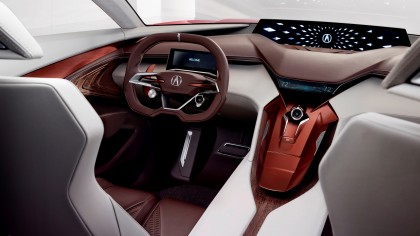
The interior is screaming "cool," with a curved, ultra-wide display mounted high and center on the dashboard for the infotainment system. It's gorgeous and controlled by a touchpad. There's something rad about having a display that's curved like the windshield.
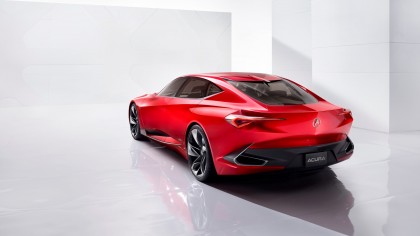
Acura believes that the future human-machine interface (HMI) will have the ability to scan each occupant in the car to load their personalized settings for music, maps and vehicle performance. While this may sound a little far-fetched, the advancement of Windows Hello and Intel RealSense 3D cameras leads me to believe this could happen in the near future.
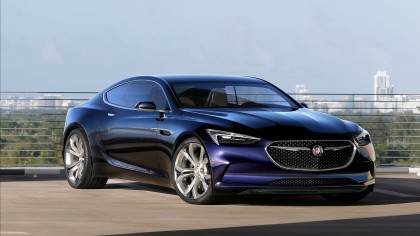
Buick Avista
While Buick is still seen as a grandpa vehicle in North America, the brand is prestigious in China. Last time I was in Shanghai in 2006, Buick's were a common sight, which is why it survived the chopping block when GM was executing brands.
The latest Avista concept breaks away from Buick's conservative styling and is simply gorgeous. It's a coupe that can seat four, probably not comfortably in the back seat, but it uses GM's Alpha platform, which is what the Camaro is built on.
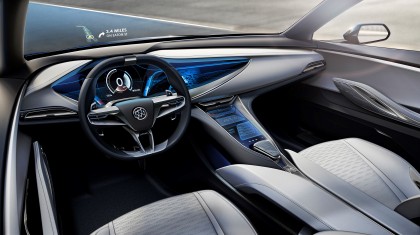
The interior is a showcase for Buick's vision of the next-generation IntelliLink system, which features an ultra-wide LCD gauge cluster with a touch-screen center console. While it looks very slick, I hope Buick sticks to physical buttons for its future interiors.
Powering the Avista is a concept, 3.0-liter twin turbo V6 with fuel-saving cylinder deactivation and stop/start technology mated to an eight-speed automatic, which should give it some performance chops.
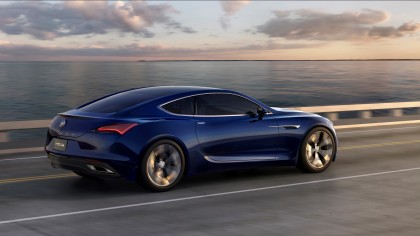
Looks aside, the best thing about the Avista concept is Buick can turn it into a production car. The Alpha platform and plenty of powertrain options that form the base of the car is already engineered for the Camaro and ATS. I truly hope Buick puts the Avista into production and revives the Riviera or Reatta name for it.
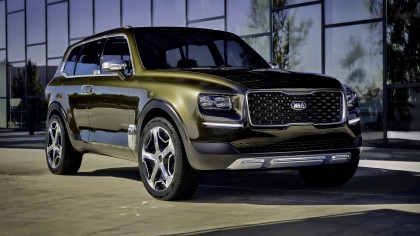
Kia Tellurride
Sport utility vehicles (SUVs) of the past looked like boxes on wheels, while crossover utility vehicles (CUVs) took on a rounded and more car-like approach to styling. Kia's Telluride concept takes the CUV styling back to the golden days of boxy, but utilitarian SUVs.
Based off the Sorrento platform, the Telluride concept won't likely traverse Moab, but it looks excellent with its suicide doors, if you look past the olive green paint. I might be a sucker for boxy SUVs, the older '80s and '90s Toyota Land Cruiser and first-generation Jeep Cherokee are still some of my all-time favorite SUVs.
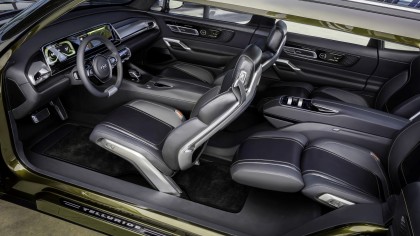
Inside is where the Telluride flexes its concept car muscle with rear captain chairs that recline to nearly flat positions with foot rests. The front and middle seats integrate sensors that provide health information of the passengers. There's a therapeutic light system mounted below the sunroof, which Kia claims helps treat jetlag and energize passengers.
A touch-sensitive band mounted in the middle row center console enables passengers to scroll through music sources and select. The music can be played through the Telluride's Harman Kardon sound system or through portable Harman Kardon headphones. The headphones charge wirelessly while stowed too.
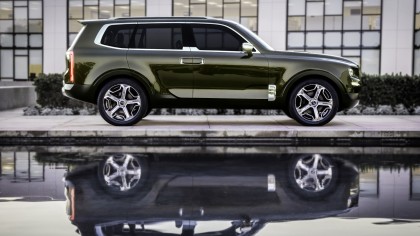
But the Telluride isn't about the lavish accoutrements for middle row passengers, the driver gets a wireless phone charger and push-button start with fingerprint reader. The fingerprint reader is particularly interesting as a potential future for cars without keyfobs, hopefully.
Powering the Kia Tellurride is a plug-in, electric hybrid powertrain that combines an electric motor with a 3.5-liter V6 for a combined 400 horsepower (hp). Its all-wheel drive and can theoretically achieve over 30 miles per gallon on the highway.
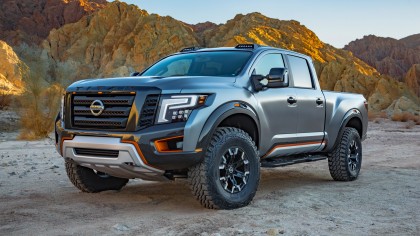
Nissan Titan Warrior
Nissan's concept is based on a production car with off-road focused modifications. The Titan Warrior concept is an adventure-ready pickup truck with desert racing-inspired design. Otherwise, it's Nissan's answer to the Ford Raptor, and there's nothing wrong with that.
Starting with a production Titan XD, the truck was raised 3 inches, widened 3 inches on each side, and equipped with 37-inch, off-road tires for expanded terrain capabilities. The Titan Warrior concept received visual upgrades to look tougher, and I'm a fan.
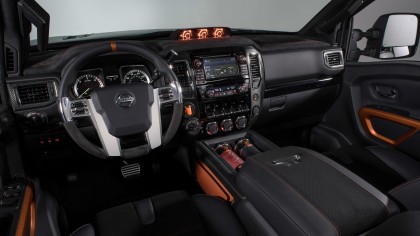
Powering the Titan Warrior concept is the beloved Cummins 5.0-liter V8 turbo diesel, which offers plenty of power for off-road fun.
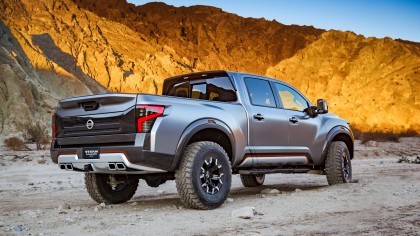
Aside from the beefed up suspension and looks, the Titan Warrior concept could easily become a production vehicle. I hope Nissan produces it, because the Ford Raptor doesn't have any competition.
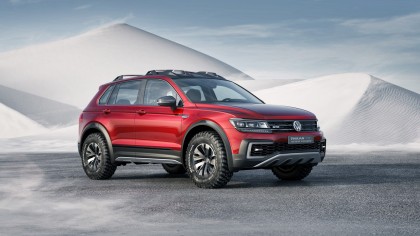
VW Tiguan GTE
Volkswagen (VW) used Detroit to debut its Tiguan GTE Active concept, which is a energy-efficient crossover. The most notable feature of the Tiguan GTE Active concept is the powertrain.
The plug-in electric hybrid powertrain combines a turbocharged gasoline motor with 148 hp with two electric motors for a combined 221 hp. The hybrid powertrain is mated to a 6-speed, dual-clutch (DCT) transmission and sends power to all four wheels via VW's 4Motion all-wheel drive (AWD) system.
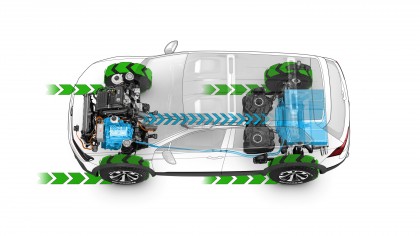
There isn't a mechanical drive shaft for the AWD system. The rear wheels are driven by an electric motor. Regardless, the 4Motion AWD system has six driving programs: on-road, off-road, sport, snow, charge and battery hold.
VW claims the Tiguan GTE Active can drive up to 20 miles solely on battery power, and can top out at 70 mph, which matches the Ford Fusion and C-MAX Energi plug-in hybrids, but with AWD.
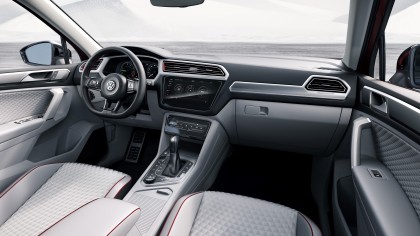
Practicality aside, the Tiguan GTE Active looks sweet. There's something about taking a crossover, lifting it a few inches, installing knobby off-road tires and adding a skid plate that makes it look cool.
Inside, you'll find the 9.2-inch infotainment system with gesture control that VW announced at CES with the e-Golf Touch. The system supports Android Auto and Apple CarPlay.
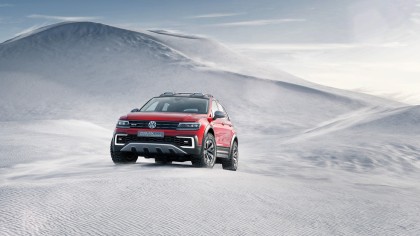
Wrapping it up
I'm personally not a fan of concept cars, as they're just teases of what's to come. I much prefer production car announcements. However, the concept cars are always cool and provide glimpses at the future of automotive – I'm just very impatient.
My personal favorite concept car is the VW Tiguan GTE Active. Don't get me wrong, I love the gorgeous Buick Avista and the brawny Nissan Titan Warrior, but I'm more intrigued by electric AWD systems.
While the 20 miles of pure electric range seems kind of weak, the potential for electric AWD systems opens up the door to drive all four wheels on virtually any vehicle. Since there's no drive shaft involved, it makes it easier to package in a car without sacrificing interior space or engineering the rear subframe to accommodate a rear mechanical differential.
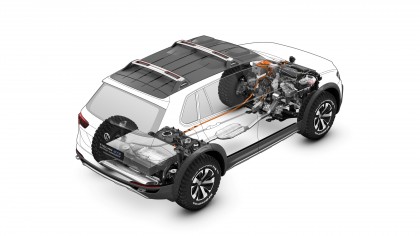
Electric motors take up less space, too. Mainstream cars are typically front wheel drive, and lack the drive tunnel or rear suspension necessary for AWD, so an electric motor driving the rear wheels is a lot simpler than installing a transmission with transfer case, rear differential and the drive tunnel to fit it, which also eliminates any form of legroom for the rear middle seat passenger.
If we want a future of autonomous cars, electric AWD is one of the technologies that will help push autonomous cars in areas with large amounts of snow each year. It gives the car more flexibility and greater control when it encounters low-traction scenarios, which is one of the major problems that need solving for autonomous cars.
- It's time to gear up for MWC 2016